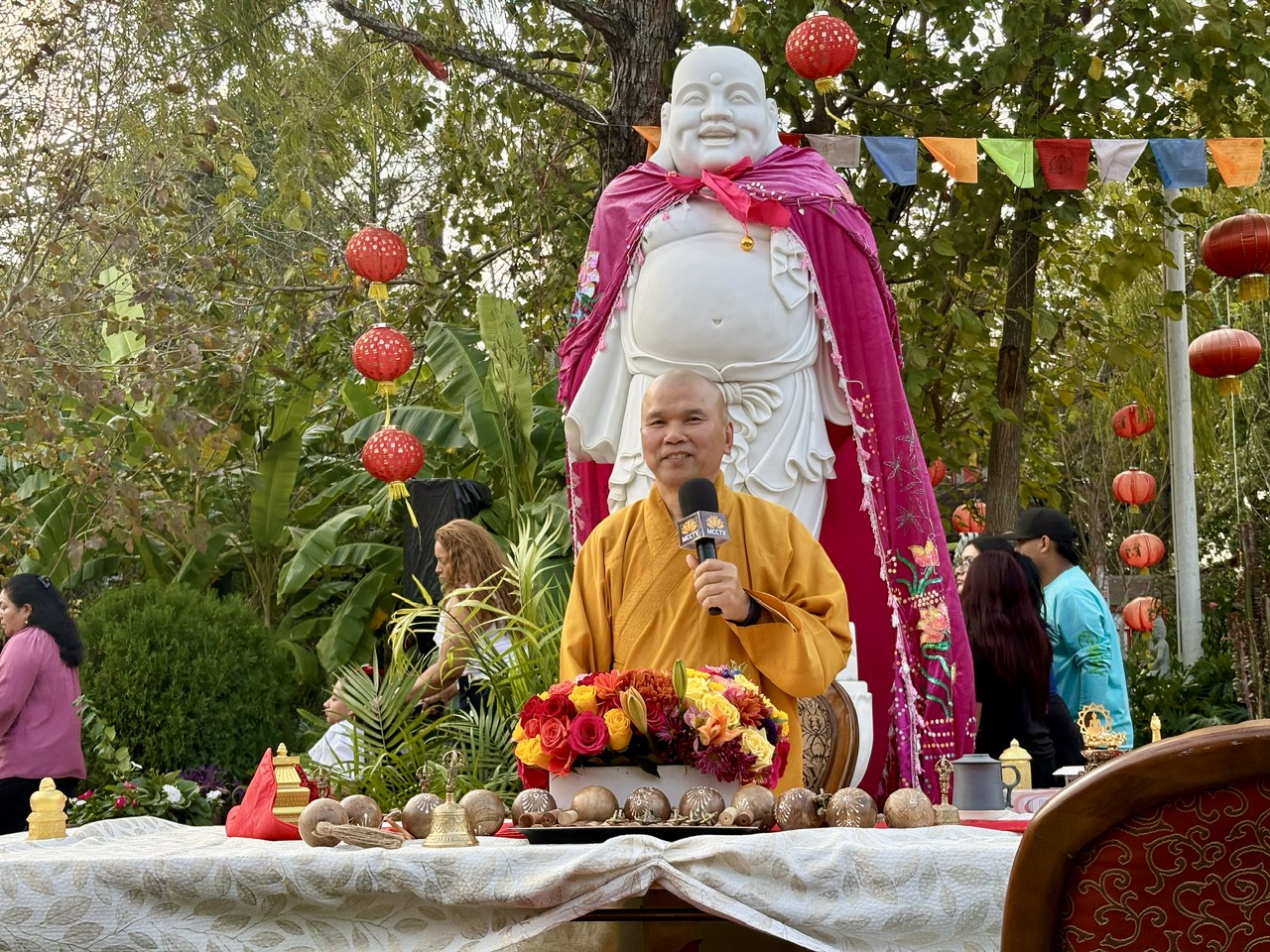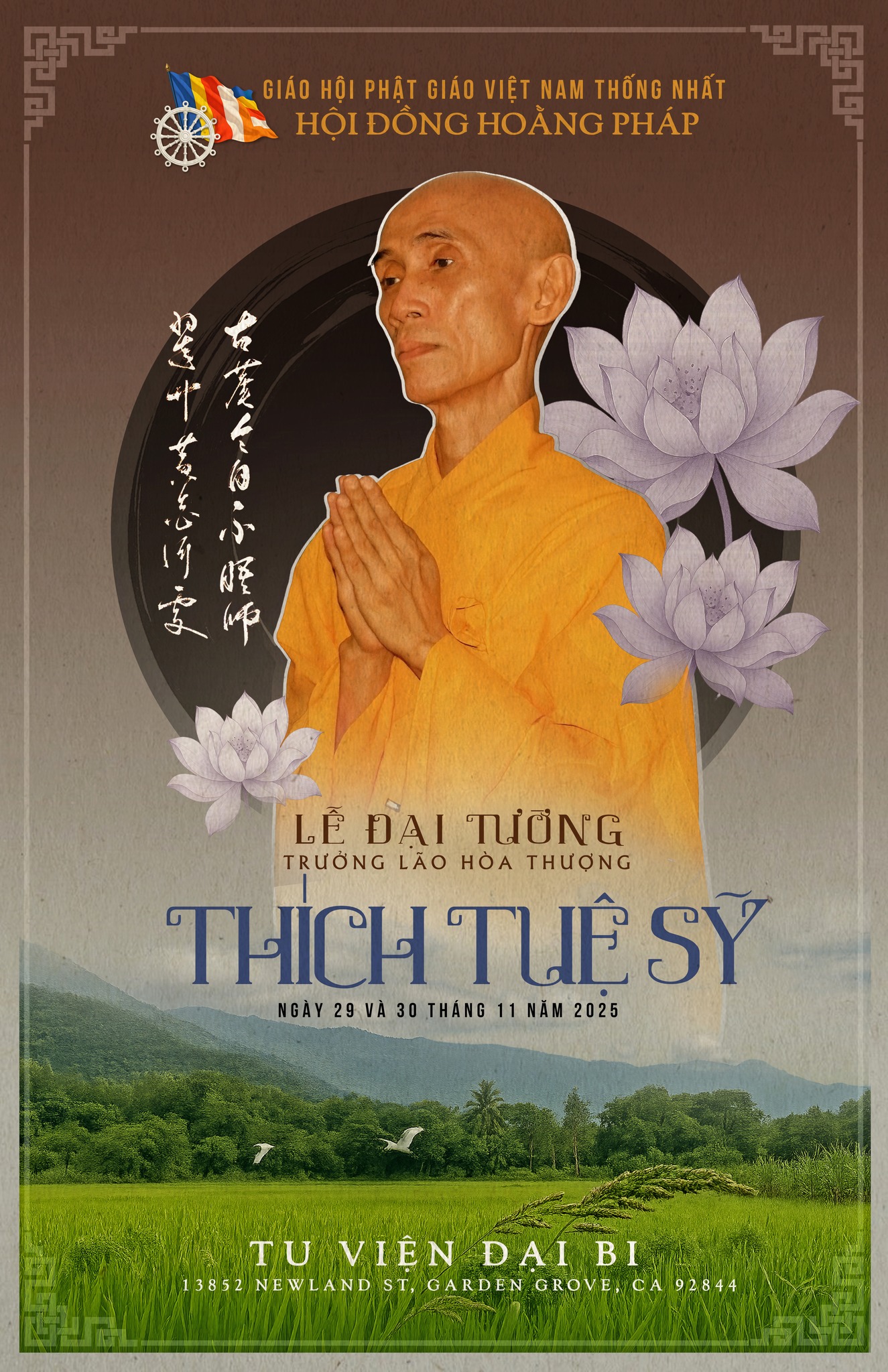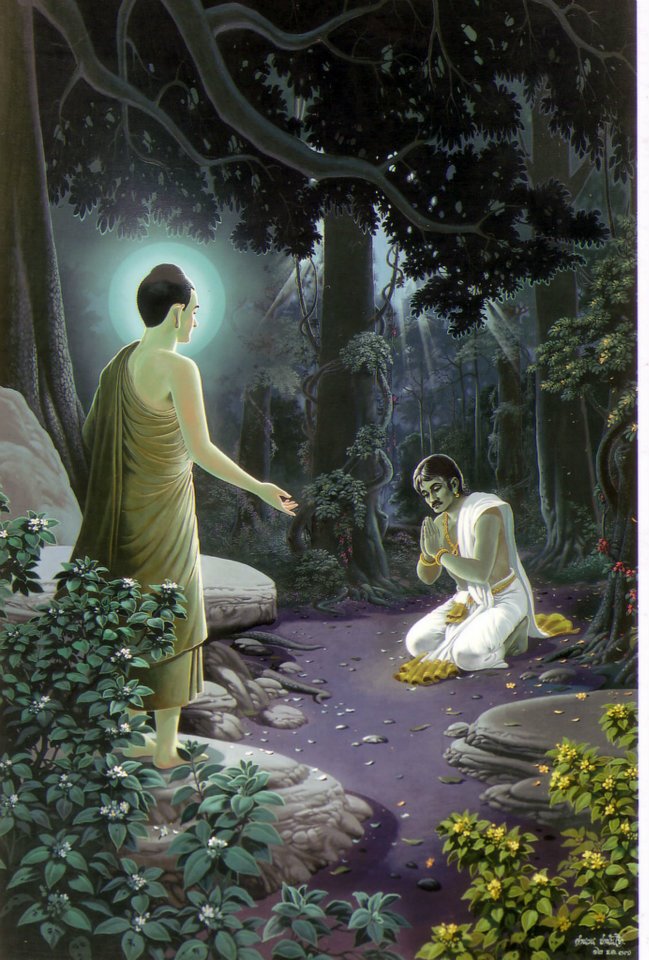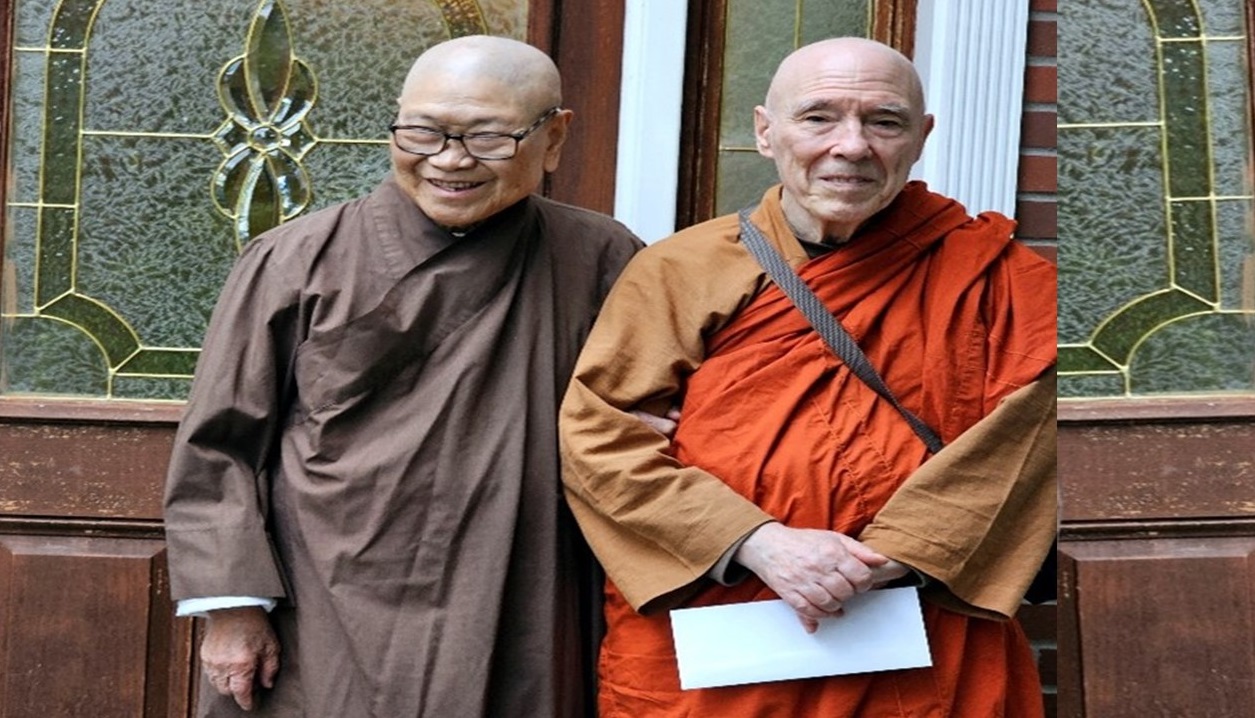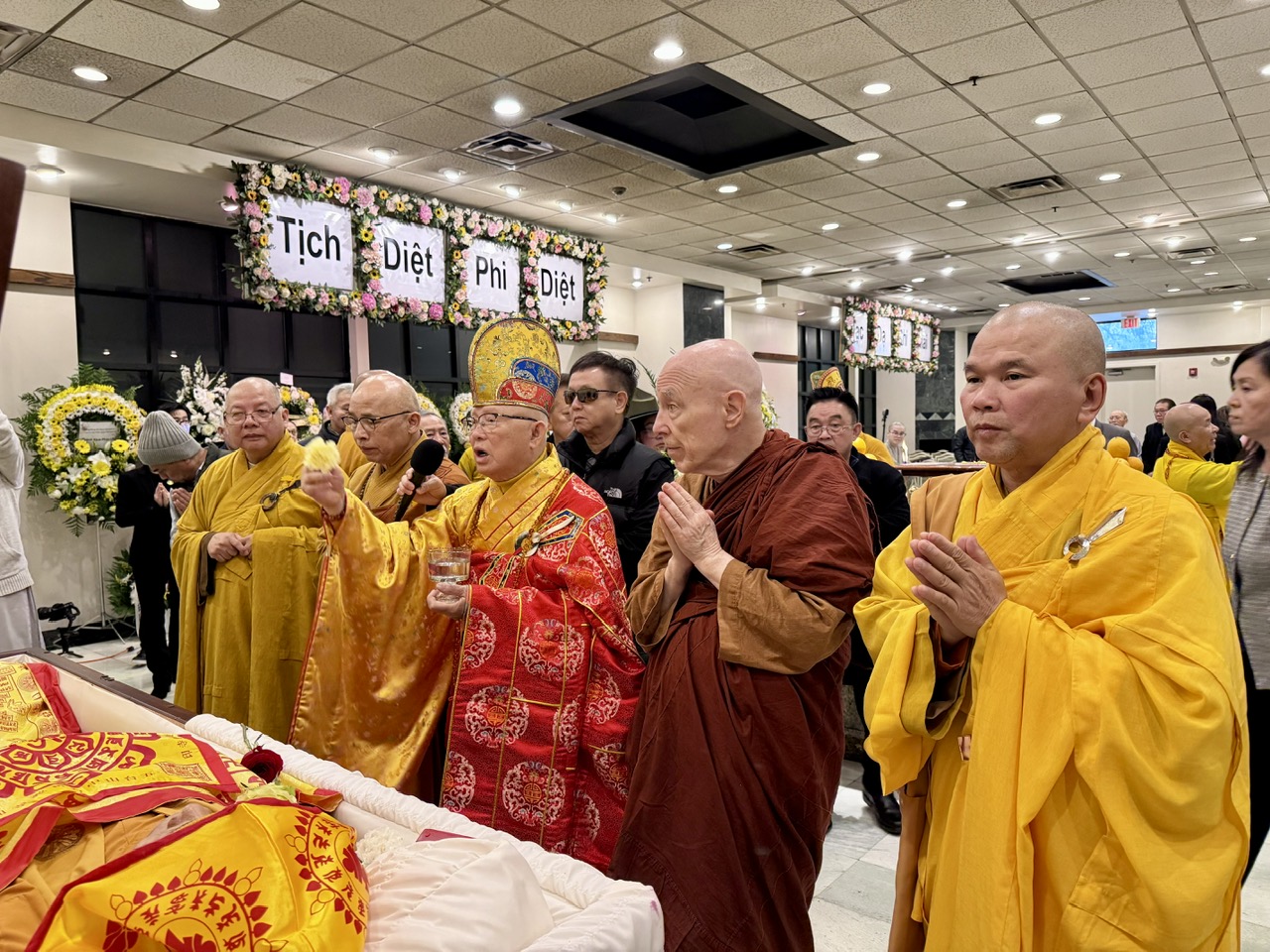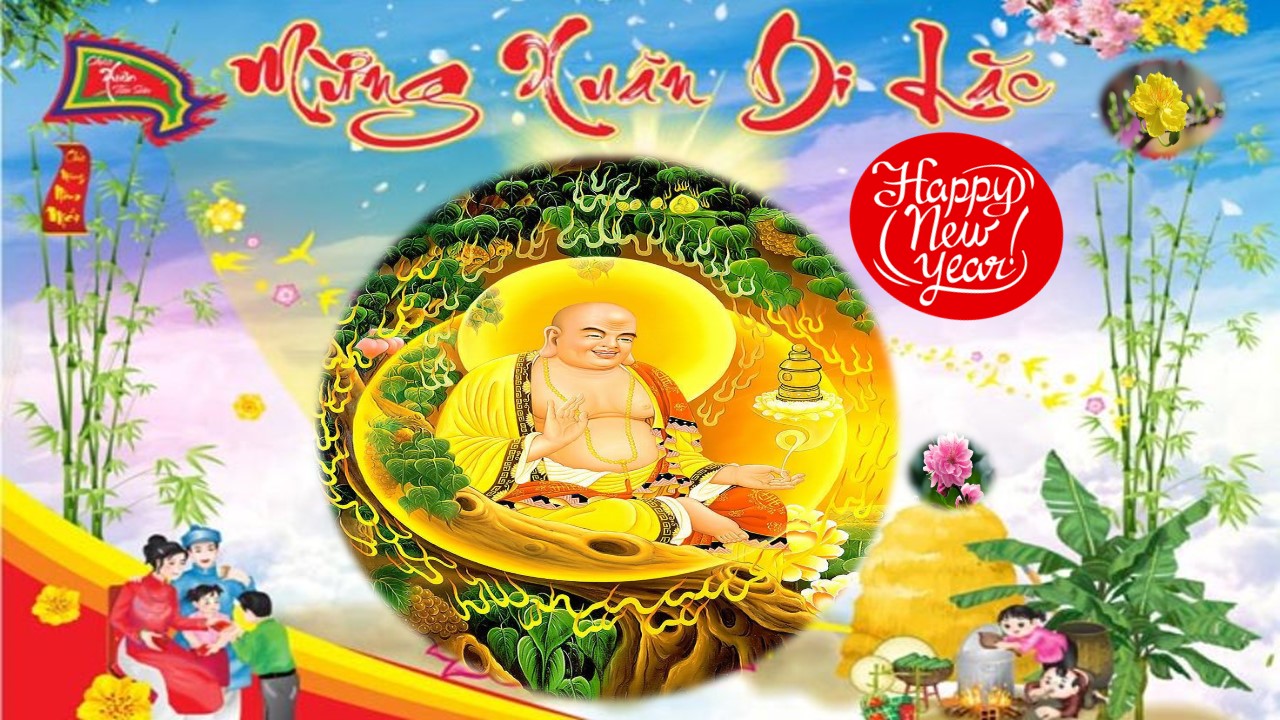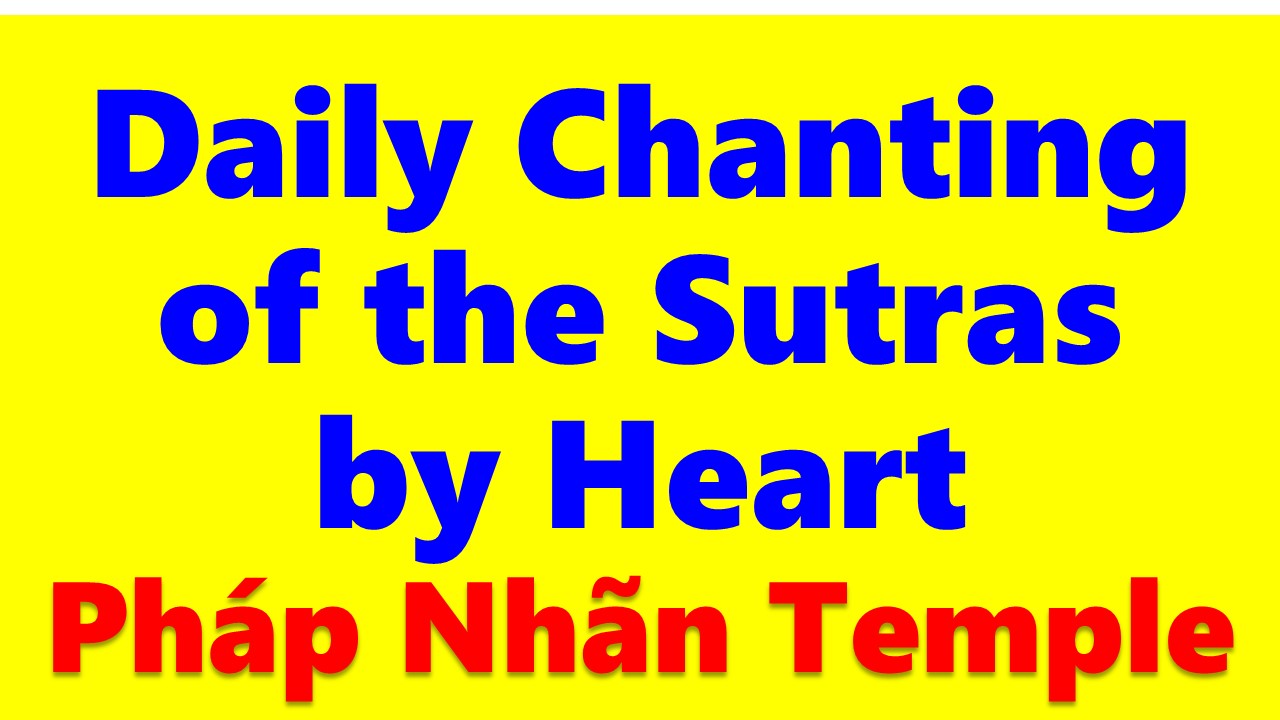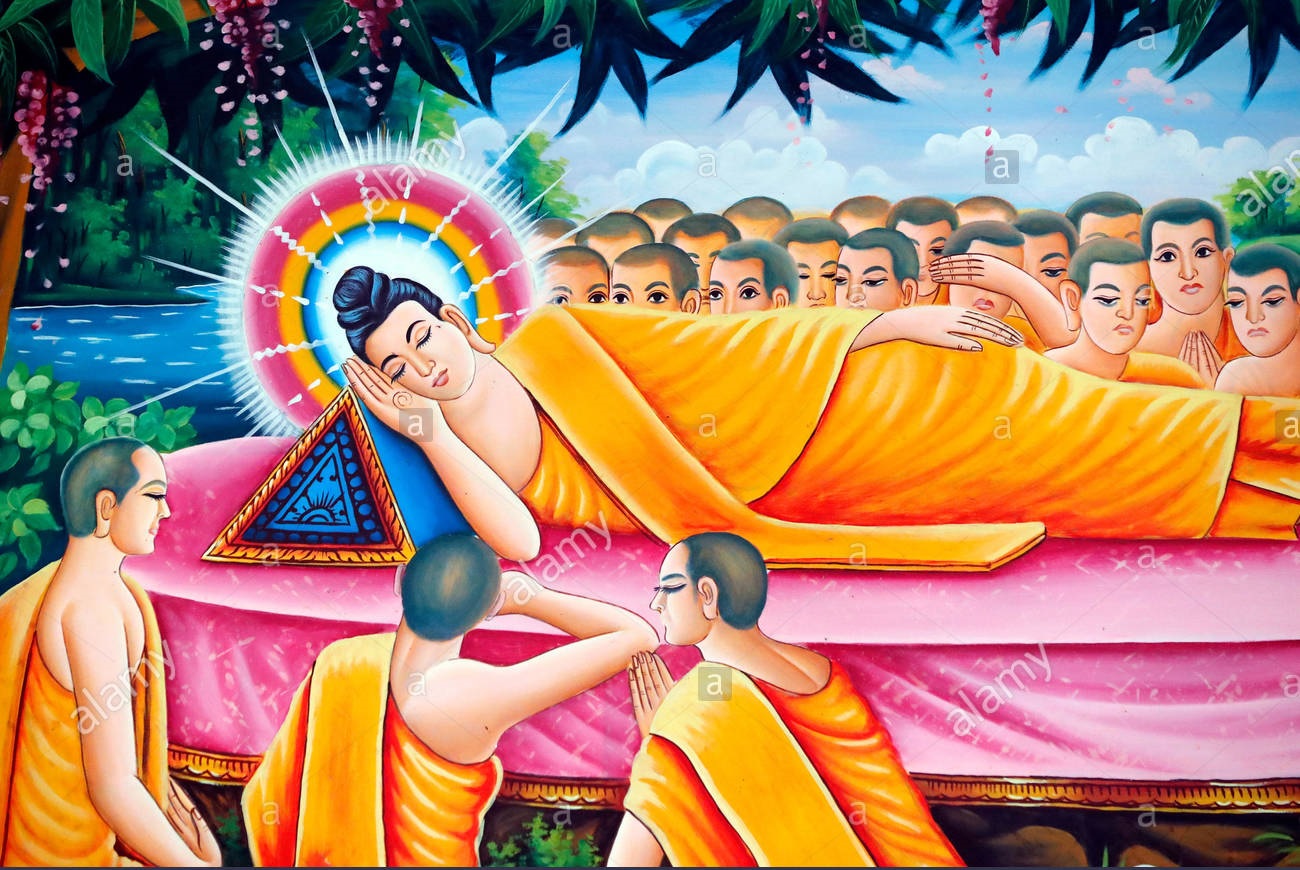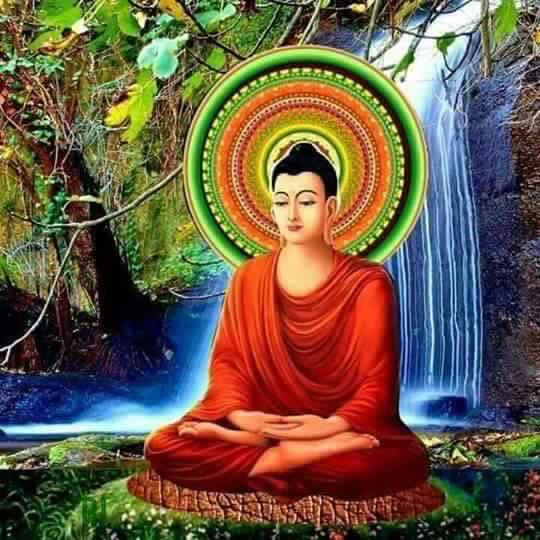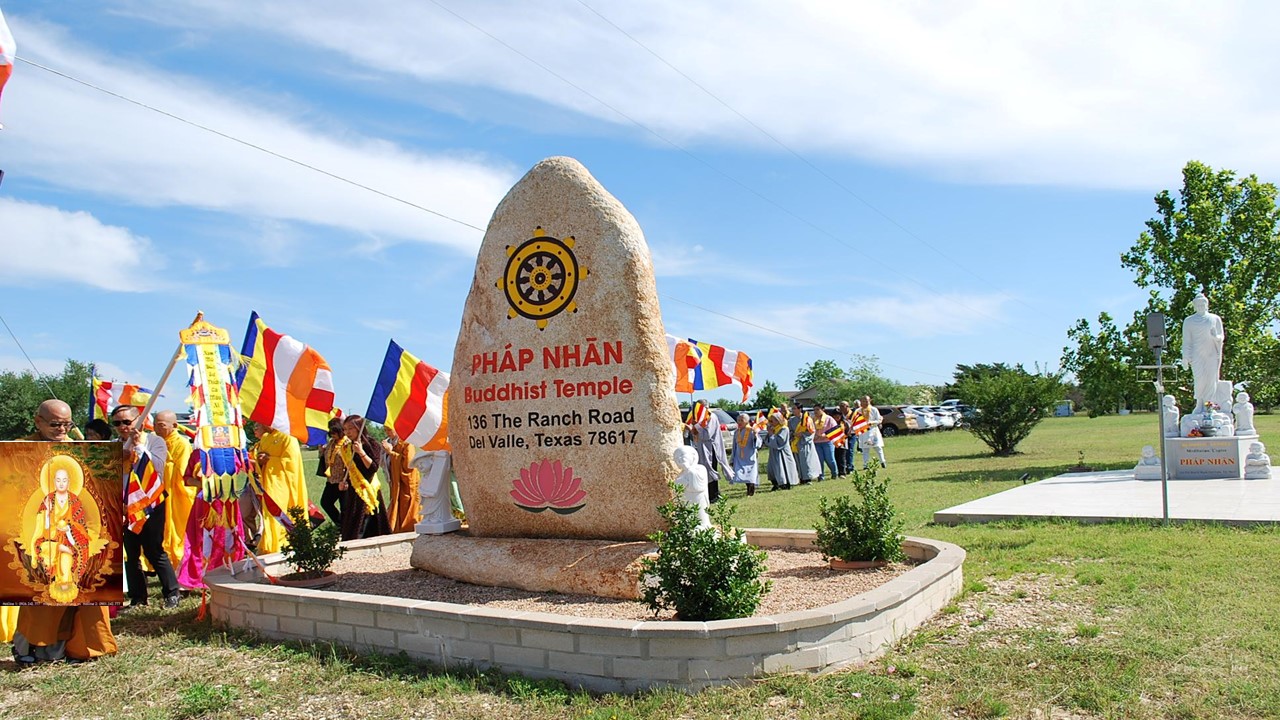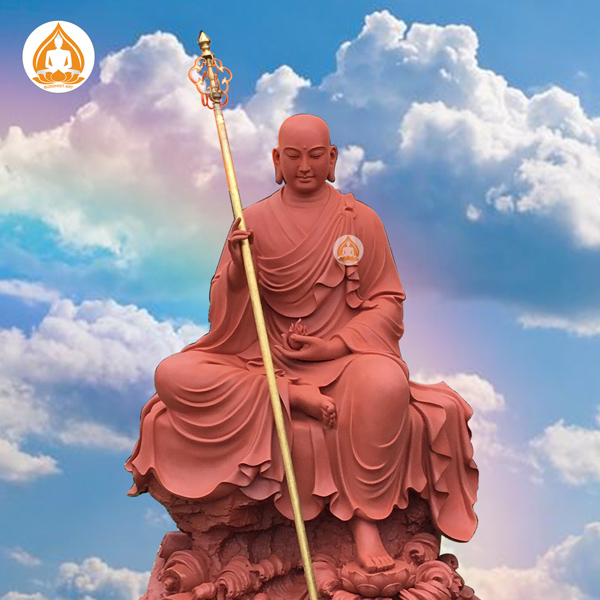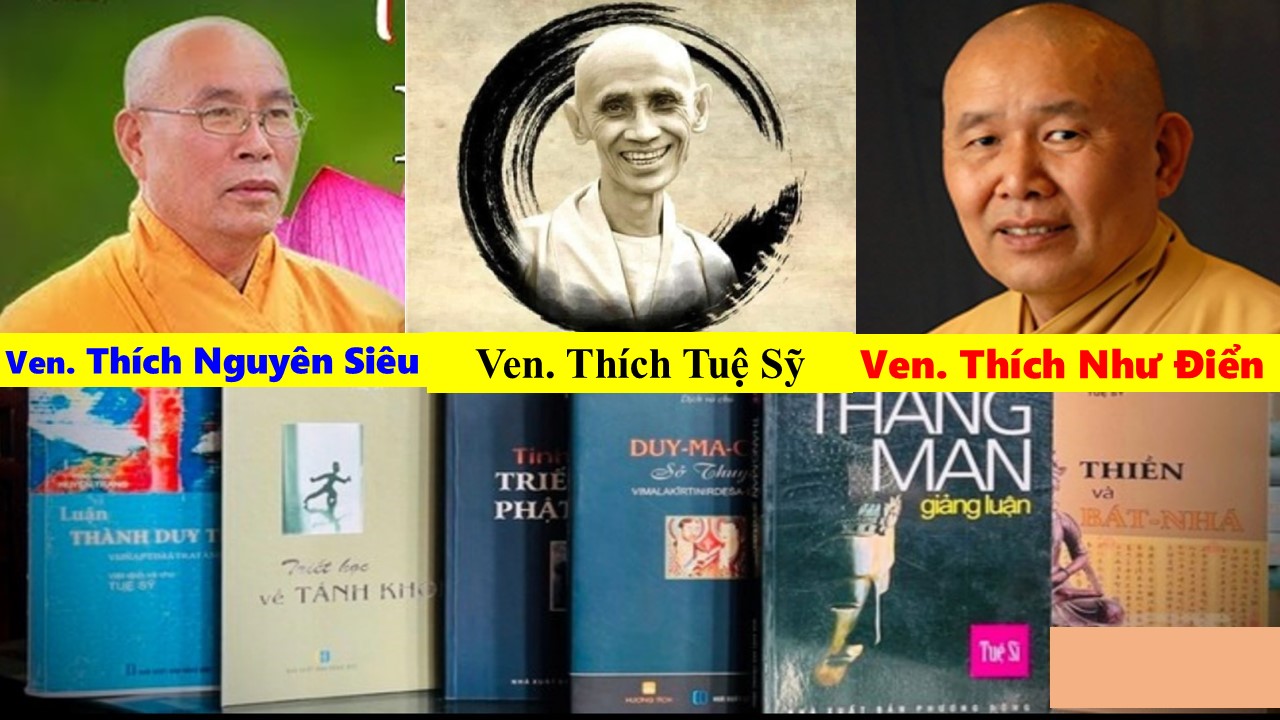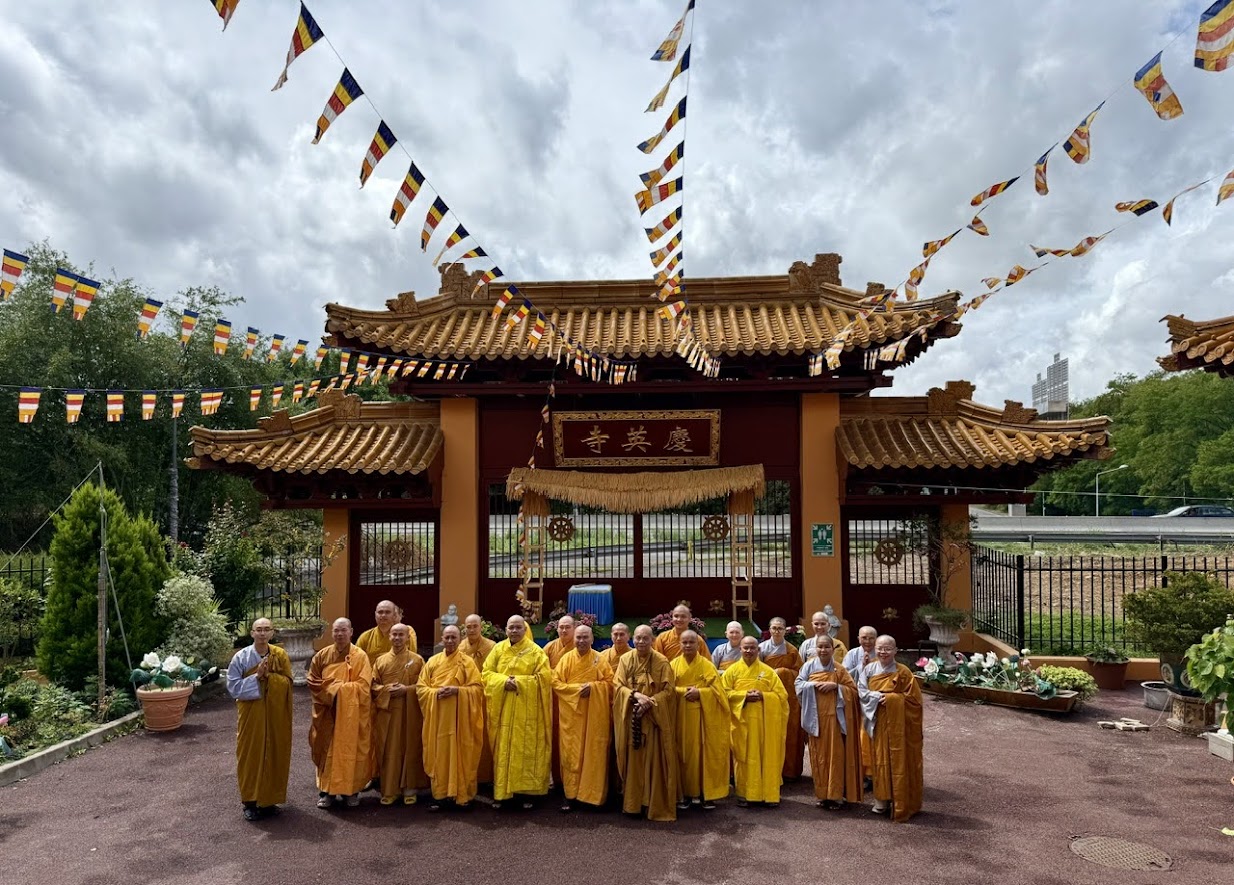
LIGHT OF ENLIGHTENMENT THROUGH BODHISATTVA SIDDHĀRTHA’S VISION
Anciently and presently, in the history of humankind, all religious leaders and secular leaders want to achieve good results in life, first, they have to experience the processes of endurance, effort, cultivation, learning, training themselves, helping, and bringing the benefits to other people. Thanks to overcoming the processes of patience, cultivation, learning, and helping themselves and others like this, they can become scientists, mathematicians, writers, philosophers, religious leaders, etc. Bodhisattva Siddhārtha Gautama,[1] the perfect spiritual Master, who was full of the qualities of virtue, loving-kindness, compassion, and wisdom, spent 6 years practicing asceticism in an deep jungle with five brothers of Elder Aññā Kondañña. After a while looking for teachers to study, Bodhisattva, an outstanding person in the flesh and bone, found out the truth by meditating in Bodhgaya throughout 49 days and nights, and got perfect enlightenment under the Bodhi tree. At that time, Bodhisattva became the Buddha titled Shakyamuni, the historical Buddha, present in the history of human thought, respected and honored by gods and human beings, and had the capacity to bring the light of enlightenment, love, and authentic peace to all living things and living beings all over this planet.
Through the above mentioned general meanings, the writer boldly titles this writing “The Light of Enlightenment through Bodhisattva Siddhārtha’s Vision.” This vision, which is here understood as the resultant vision of practicing contemplation meditation and insight, has the ability to clearly see the process of endurance, diligence, cultivation of meditation and concentration, enlightenment attainment, Dharma propagation, and the teaching of human beings of Bodhisattva Siddhārtha. In the title of this writing, we encounter words like “Light, Enlightenment, Bodhisattva, Siddhārtha.” Here, the writer explains in turn each terminology and learn about the meanings and contents of the foregoing terminologies.
Normally, when referring to the light, people often think about sunlight, moonlight, evening star light, morning star light, electric lights, car lights, neon lights, etc. These kinds of lights are natural light, material lights, or artificial lights. Different from kinds of those lights, the light here discussed mainly is the light of enlightenment, originates from Bodhisattva Siddhārtha’s meditation practice, endurance, effort, purification, and defilement transformation into enlightenment.
Thanks to practicing meditation-concentration purely, mindfully, and consciously, Bodhisattva who had the ability to terminate ignorance, defilements, leaks, attachments, etc., achieved enlightenment, and ended the cycle of death and rebirth.
The light of enlightenment mentioned here symbolizes Buddhism, the Buddha, the Dharma, and his disciples (Sangha). Buddhism is the religion of peace, the Buddha is the King of peace, the Dharma is the path of peace, and the disciples are the messengers of peace.[2] Peace is authentically present whenever we learn, understand, practice, and apply the Buddhadharma in our daily lives appropriately in various localities, regions, and countries. When we understand and practice so, the light of the World-Honored One’s enlightenment has the ability to shine all over the world. Moreover, we know that in the factors of his enlightenment, there are still other substances such as right mindfulness, awareness, stableness, relaxation, carefreeness, and calmness. Achieving those qualities, practitioners will undoubtedly obtain peacefulness and joyfulness right here and right now in the present moments. Enlightenment contains many different meanings and stages as follows:
Enlightenment of ordinary practitioners, through the process of cultivating, transforming defilements, applying, and practicing the Buddha Dharma in our daily lives, we can obtain enlightenment partially and gradually. Enlightenment of the Bodhisattva practitioner, through the process of having cut off afflictions, and discovering the truth of suffering (Dukkha), the origin of suffering (Dukkha Samudaya), the cessation of suffering (Dukkha Nirodha), and the path leading to the cessation of suffering (Dukkha Nirodha Gāminī Patipadā),[3] Bodhisatta Siddhārtha had the ability to attain enlightenment fully and perfectly.
In the process of his cultivation, with right mindfulness and awareness, stableness and tranquility, Bodhisattva Siddhārtha not only achieved enlightenment of liberation in his past lives, but also right in his present life, he was the embodiment of a newborn Buddha, and also Sakyamuni Buddha later. On one occasion, king Suddhodana, his father, had twice greeted his son with respectfully joined hands and once paid homage to the Buddha; that is,
1. The king put his hands together and greeted his son while the seer Asita was considering prince’s physiognomies. The prince who would later leave the royal family for a religious life became the fully awakened and enlightened One, had the ability to show the path of peace, joyfulness and happiness to the many all over this planet.
2. In the ceremony of plow and cultivation, the king put his hands together and greeted his son while the prince at the age of 9 meditating under a pink apple tree contemplated, and saw living beings fighting, killing, and eating one another. With his ready compassion heart, the prince spread his loving heart to all living things and living beings.
3. The king paid homage to the Buddha while the Buddha was going for alms on the way back to visit Kapilavastu City, where his elderly imperious relatives in the royal palace bore their minds of arrogance and thought that the Buddha was only their descendant. At that time, reading their thoughts, the Buddha used energies of compassionate water and wisdom fire to collect and convince them. At that time, these people aroused their respectful hearts and paid homage to the Buddha and his Sangha.
Thus, we can see the potential for enlightenment comprising the secular substance and the holy substance, which are always present in their bodies and minds. In the secular substance, there is the holy substance; in the holy substance, there are the substance of enlightenment and liberation. The holy substance in Buddhism is understood as Buddha nature or Buddha substance. However, considering the absolute aspect, we see the potential for enlightenment within themselves, in the holy substance, Buddha nature is no more, and in the secular substance, Buddha nature is no less.
Understanding more broadly, according to the standpoints of Buddhist loving-kindness and compassion, in human beings and in animals, Buddha nature is present, and even in insentient beings, Buddha nature is also present. Understanding the meanings clearly like this, we can cultivate and water Buddha nature in us, in sentient beings, and in insentient beings by protecting the environment, respecting their lives of all living things and living beings by practicing the first ethical training of Buddhism, the path of enlightenment. Whether in secular position or in holy position, whether in kinds of insentient beings or in those of insentient beings, if we practice loving-kindness, compassion, and wisdom well, the light of Buddha nature within us will be manifested.
However, considering relative aspect, we know the manifestation of Buddha nature depends on the cultivation level of every ordinary practitioners and Bodhisattva practitioners. In the holy One, Buddha nature shines like the full Moon, in the human being, Buddha nature shines like the crescent Moon. Toward Boddhisattva practitioners, through the process of cultivation and enlightenment, Buddha nature within them can shine 100 percent, because their defilements and leaks have been annihilated. Toward ordinary practitioners, through the process of cultivation, purification, and transformation, Buddha nature within them can shine …40, 60, 80 percent, etc., because their defilements and leaks are being annihilated and eventually will be totally annihilated.
The moon is dim because of clouds, Buddha nature is dim because of afflictions; clouds are dispersed by the wind, afflictions of desire, anger, delusion, etc., are annihilated by cultivation and transformation. Cultivation means the process of recognizing and transforming defilements of greed, anger, delusion, arrogance, doubt, wrong view, etc. When defilements are transformed and annihilated, the light of enlightenment of the Bodhisattva practitioner shines brightly and fully. At this point, Bodhisattva Siddhārtha, accomplishing and attaining perfect enlightenment, is worthy to be adored and respected by the world.
Thus, as discussed here, the light of enlightenment is understood as the light of meditation, concentration, that of insight, that of peace, that of great heroism, great power, and great loving-kindness and compassion discovered and obtained enlightenment by Bodhisattva Siddhārtha. It does not fall down from heaven, it is not a gift granted by a god. It is tasted and experienced by the Bodhisattva through his cultivation, practice, and spiritual attainment. It is very marvelous, surpassing, and practical in the present, intended for those who care about, learn, practice, and apply the Buddha Dharma in their daily lives to bring peace, joy, and happiness to other people right in the world.
This enlightenment light is not created by greed, anger, delusion, ignorance, wrong view, hatred, and war. It is created by right endurance, effort, diligence, the spirits of self-cultivation, self-support, self-enlightenment, and self-liberation through practicing and applying the substances of loving-kindness, compassion, wisdom, peace, meditation, concentration, and insight to the many right here and right now in this present life. These peaceful substances have the ability to arouse and awaken flowers and fruits of insight in Bodhisattva’s mind and body to become illuminated.
Bodhisattva is a Sanskrit word; Bodhi means greatness, enlightenment, awakening or awareness; Sattva means a being, a sentient being, or an enlightened human being. Thus, Bodhisattva means a being who has attained enlightenment and awareness vows to be on the way of joy, cultivation, and liberation to benefit for oneself and for other people right in this life.
On the route to leading to enlightenment and deliverance, Siddhārtha, who was the Bodhisattva in the flesh and bone actually in the history of human thought, was full of merit and wisdom, courage and effort, perseverance and patience, found the truth and the light of enlightenment later on. It was the Bodhisattva who practiced meditation and concentration perfectly became the nobly spiritual Master, instructed, and showed the way of joy and peace to all living things and living beings on earth.
We ordinary beings, because of the karma power, were born, we each encounter different situations, different natures and characteristics, different families, different levels of wealth and poverty, etc., no one is alike at all. Prince Siddhārtha, who is an authentic Bodhisattva, because of the vow power, was born in the world at his royal, wealthy, and powerful family in Kapilavatthu, a part of Nepal today.[4]
Growing up, the prince got married with Yasodharā, and had a unique son called Rāhula. Along with his attendant named Channa, one day the prince went to visit the four gates of royal palace, and saw four scenes of reality of life; that is, an old person, a sick person, a dead person, and an ascetic. The fourth scene, which was the ascetic, represented a calm and free way of life, made a deep impression in the prince’s heart, and created the inspirational sources for the prince later on to become a homeless monastic living in natural environment and exciting mountain and forests.
Practicing and spending six years of asceticism in the Mahakala cave in Dhungeshwari mountain, everyday the Bodhisattva only ate a couple of fruits, and gradually his body only remained skins covering bones. When discovering this ascetic way did not lead him to the result of peaceful joy and deliverance, Bodhisattva Siddhārtha was determined to practice the method of the Middle Path (Pali: Majjhimā Paṭipadā; Sanskrit: Madhyamā Pratipad) (no sexual indulgence and no ascetic mortification) by receiving and to using a milky gruel bowl offered by Ms. Sujata. His health got better and better. After that, he received a bunch of grass made offerings from a Brahmanical farmer, and then he went straight to Bodhgaya, where he spent many days and nights meditating under the Bodhi tree. Finally, he defeated Mara’s armies (Mara stands for the habits of one’s own greed, anger, delusion, and clinging), and obtained perfect enlightenment.
In the process of cultivation and leading to enlightenment, the Bodhisattva overcame not only the patience of inner mind, but also that of the outer scene; outer scene is the external scene, specially weather and natural environment. In India, in the hot season, the temperature can rise above 45 degrees Celsius. (45% C. = Celsius/ Centigrade = 120 degrees F. Fahrenheit), and in the cold season, the temperature can be below 0 degrees Celsius. (0% C. = 0 degrees C. Celsius/ Centigrade = 32 degrees F. Fahrenheit). In the present age, living at home, we have enough clothes, blankets, pillows, mattresses, heaters, air-conditioner, etc. to protect us very well, but sometimes we still feel cold, hot, and uncomfortable.
Now, we would like to keep thinking about the Bodhisattva Siddhārtha, who lived his homeless life, ate flowers and fruits, drank rainwater, spring water to nourish his body, and used awareness, mindfulness, meditation, and concentration to nurture his mind, etc. By night, he slept under a tree and by day, he went for alms. He used the natural environment as home, used trees and forest leaves as beds, used the moon and stars as lamps, used cultivation of meditation, concentration, mindfulness, and awareness to make the spiritual food for his body and mind, and used Dharma propagation to benefit other people.
The next is inner mind, which is the most important and deepest human part, is understood as storehouse of consciousness (Ālaya Vijñāna), contain the the good seeds and the non-good seeds. The good seeds consist of right patience, endurance, overcoming, selection, solidity, diligence, courage, spiritual strength, unshakable confidence, the light of enlightenment, insight, etc. The non-good seeds are comprised of slackness, laziness, regression, hesitation, feebleness, weakness, delusion, ignorance, etc.
Cultivation is the process of patience practice, nurture, selection, advancement, and the transformation from difficulties into peacefulness, suffering into happiness, ignorance into clear understanding, etc. However, we humans, when encountering severe weather, eating deficiently, sleeping coldly, etc., usually, tend to live discouragingly and downheartedly. But, Bodhisattva Siddhārtha, who was always happy to welcome the difficulties, asceticism, and patience, considered these adversities to create his mental strength, strong will, effort, and extraordinary energy, and lead him to spiritual enlightenment and deliverance later on.
With the spirits of great hero, great power, great compassion, and great wisdom, when obtaining enlightenment and deliverance, the Bodhisattva Siddhārtha practiced right effort, endurance, and patience. Wanting to attain enlightenment and become the Buddha, the Bodhisattva had to start from a person of Dependent Arising (S. pratītyasamutpāda; P. paticcasamuppāda). Building on this person, the Bodhisattva cultivated and found the substance of holiness, that of solidity and relaxation, peacefulness and happiness. Getting rid of this person, the Bodhisattva did not find the substances. As the enlightened and awakened Practitioner, the Bodhisattva found out the light of the truth through the application and practice of right view, right though, right patience, purification, and transformation of afflictions of greed, anger, delusion, etc.
Therefore, Buddhism has always taught people who cultivate, transform, and change their karmas are the key factors leading to enlightenment. Depending on a supreme being to search out enlightenment in him, practitioner will never find it. Depending on an interdependent co-arising person to cultivate, to purify, and to transform afflictions and leaks, practitioner can find enlightenment, deliverance, and Buddha nature in himself or herself.
Bodhisattva Siddhārtha, who cultivated well, found the light of enlightenment in ignorance and wrong view, found bodhi in afflictions, happiness in suffering, the lotus in mud, and flowers in garbage, and found the Middle Way in the ascetic way of mortification and in sensual indulgence, etc. Conversely, cultivating asceticism together with Bodhisattva Siddhārtha, the five brothers of Añña Koṇḍañña, who did not cultivate well, did not discover the Middle Way, did not practice meditation and concentration perfectly like the Bodhisattva, and did not find enlightenment and deliverance in themselves.
With patience and effort, with the spirits of great actions and great vows, the Bodhisattva found the light of enlightenment, the truth of suffering (Dukkha), and the path leading to transformation of suffering (Dukkha nirodha gāmini patipadā ariya sacca). This path is the Middle Path (Majjhimā Paṭipadā) that includes morality, meditation, and wisdom, interrelated closely with “Right View, Right Thought, Right Speech, Right Action, Right Livelihood, Right Effort, Right Mindfulness, and Right Concentration.” At the aspect of literal meanings, the path is metaphorical as the eight-lane freeway of supporting each other like image and its shadow creating a useful means of transportation to help people travel easily. At the aspect of figurative meanings, it is the path of peace consisting of the eight methods of practice very practically for families, schools, and for society. If everyone applies and practices this path together in the daily life in accordance right with the dharma, they can bring the flowers and fruits of authentic joy and happiness to the many all over the planet.
Inner mind and outer scene finished being discussed above. Next, we keep learning about the meanings of Mara’s army. Different from the visible realms of humans, maras belong to the invisible realms; army means a group of the many. According to the metaphorical teachings of Buddhism, Mara’s army symbolizes the negative seeds in our bodies and minds. For example, tiredness, laziness, indolence, looseness, licentiousness, hesitation, disheartenment, regression, greed, anger, delusion, violence, hatred, etc. are the negative habits. Right endurance, effort, courage, promotion, energy, vitality, tolerance, generosity, peacefulness, happiness, peace, insight, etc. are the positive habits.
As people of awakening, we recognize that the negative and positive seeds are always present in us from hour to hour, from day to day, from week to week, from month to month, and from year to year. Cultivation is the process of helping us purify and transform the negative seeds into the positive seeds by applying and practicing the Buddha Dharma in our daily lives diligently, mindfully, and awakeningly. When we practice so, the negative seeds in us will be gradually transformed, the positive seeds in us will be developed, and the light of enlightenment in us will be clearly manifested.
Conversely, when we do not practice the Buddha Dharma well, the positive seeds in us will be gradually reduced and lost, the negative seeds in us will rise up and increase quickly, Buddha nature and the light of enlightenment in us will be overshadowed and obscured. Those who practice the Buddha Dharma well reap the flowers and fruits of very much peacefulness and happiness. Those who learn and practice it not well or slowly reap the flowers and fruits of very little peacefulness and happiness. The process of Dharma learning and practice is that of helping us achieve the light of enlightenment, peacefulness, and happiness in every minute, every hour, every day, and in different stages of life.
According to the metaphorical senses, Mara’s army represents the mind of envy, discrimination, fearfulness, inferiority, not as good as other people, and fearing they are better than one. If a person does not cultivate or cultivates a little bit, Mara’s army in him or in her will appear easily, and vice versa, if a person cultivates diligently, Mara’s army in him or in her disappears gradually.
When the morning Star rose, the Bodhisattva Siddhārtha, who cultivated diligently, won mara’s army completely by ending defilements and negative habits in himself. At that time, his mind got suddenly illuminated, the light of enlightenment, peace, peacefulness and happiness in him had the ability to shine all over himself and other people right in this world.
Through the foregoing meanings, we see that the light of enlightenment and awareness originates from Dharma practice; stableness and calmness are derived from Dharma practice; peacefulness and happiness are also derived from Dharma practice. Along with Dharma practice, Dharma understanding, Dharma learning, Dharma meditation, Dharma concentration, Dharma happiness, Dharma propagation, and Dharma protection go together with Bodhisattva Siddhārtha. Throughout the Dharma practice, he had fully enough those qualities.
At this point, we should understand more that when one person is born in the world, he is full of eyes, ears, noses, tongue, body, and mind, his whole family is happy with him. When he grows up, studies, graduates, achieves talents, has a stable job, and gets married, he himself is not only happy, but his paternal and maternal families are also happy. The forgoing senses are mentioned about worldly person. Different from that person, Bodhisattva Siddhārtha, the monastic person, found the light of enlightenment, the truths of suffering, and the path of transformation of suffering under the Bodhi tree at Bodhgaya about the year 589 before the common calendar. In this world, not only all sentient beings, but also all insentient beings on the globe have got instilled the light of loving-kindness, compassion, wisdom, peace, and peacefulness in him.
“Bodhisattva Siddhārtha,
who had been determined to become the homeless Monastic,
obtained the path of awareness,
gained that of peace,
attained that of deliverance,
instructed living beings
to be on the right way
by the light of enlightenment,
by that of the Buddha Dharma,
by that of the Sangha
of the World-Honored Buddha.
Many people cultivate his teachings together,
their families get happy.”
(The writer)
According to interdependent vision of Buddhism, a newborn Buddha, prince Siddhārtha, or Bodhisattva Siddhārtha, originates from the physical person of dependent arising and elements (Sanskrit pratītyasamutpāda; Pali paticcasamuppāda). Through his cultivation of right effort, endurance, meditation, and concentration, depending this physical person, Bodhisattva Siddhārtha, finding out the light of enlightenment from himself, taught and benefited other people. Therefore, when this person was born, not only are the people and his royal family in Kapilavatthu of ancient India, a part of Nepal today, happy and glad, but living things and living beings all over the planet are happy and glad as well.
There are the two following main reasons: First, King Suddhodana and Queen Māyādevī, when over 40 years old, had a first-born child named Siddhārtha, a fully contented person with the sufficiency of virtue and wisdom. Both the King and the Queen have dedicated the most precious person to this earth in the history of human thought. Indeed, this fully contented person always has whosome mind, wholesome thoughts, and wholesome words to bring the light of peace, loving-kindness, compassion, wisdom, enlightenment, deliverance, peacefulness and happiness to the many all over the planent.
At the present day, with right confidence in Triple Gem (the Buddha, the Dharma, and the Sangha), those who have enough wholesome conditions to learn, understand, teach, practice, and apply the Buddhadharma in their daily lives, they themselves have the ability to offer their virtue and wisdom to their families, Temples, relatives, and to society. When understanding and practicing so, they have the capacity to contribute to building their peaceful homeland, happy families, and a realm of pure land right in this world.
Second, after prince Siddhārtha was born, receiving the invitation from king Suddhodana, seer Asita and Añña Koṇḍañña, two renowned hermits at that time, were invited to the court of Kapilavatthu to foretell the future for the prince. They both predicted that when growing up, the prince who would undoubtedly abandon the path to make a king, decide to choose the path of a homeless monastic, understand impermanent enlightenment, cultivate meditation, concentration, become the perfectly enlightened One, and bring peacefulness and benefit to human beings.
Indeed, the seer Asita’s and Añña Koṇḍañña’s predictions, which were the unique prophecies in the history of Buddhism and humankind, later on became true. With the spirits of self-cultivation, self-deliverance, self-enlightenment, self-support, and selfless-support, the prince Siddhārtha, who grew up, understood impermanent enlightenment, left his royal family, was determined to leave his royal family for a religious life and became the Buddha, titled Shakayanuni. In Sanskrit, Muni means a quite sage, Shakya belongs to a royal clan; Shakyamuni means a quiet Sage of sakyan clan. Buddha means the fully enlightened or awakened One. Thus, Shakyamuni Buddha means the fully enlightened One, who had the potential to end defilements and ignorance, founded Buddhism, and brought the flowers and fruits of love and peace to living things and living beings all over the planet.
With the seeds of enlightenment through many lives, with the lineage of the sages through many eons (Kalpas), when Bodhisattva Siddhārtha becomes the Buddha, the light of his enlightenment, loving-kindness, compassion, and peace has been widely spread over the world. This light, which is equal, does not discriminate, and does not prevent anyone at all. Those who have enough wholesome opportunity to study, to practice, and to apply the Buddha Dharma in their daily lives diligently, mindfully, and consciously have the ability to reap the flowers and fruits of peacefulness and happiness right here and right now in the present life. This is special characteristic of Buddhism rarely found or not found in other religions.
To sum up, through the above-mentioned things, we know that the light of enlightenment originates from the enlightened cultivation of Bodhisattva Siddhārtha. When he became the Buddha, the fully enlightened One, along with his disciples, messengers of peace, kept going on the way, set the wheel of the Dharma in motion to spread the light of enlightenment and peace to the many all over India.
Today, the light of enlightenment and peace has been not only spread in India, but also everywhere throughout the world. Wherever the light of enlightenment has been spread, there people live stably in the path of awakening and enlightenment, they have never met discrimination, distinction of race, and division of caste. Wherever Buddhism has been spread, there, with practice and application of the Buddha Dharma in their lives, people will live more gently and better. Wherever Buddhism has been present, there Buddhism, the path of peace, will have never caused a religious war for anyone. Likewise, wherever Buddhism has been present, there, homeland, whose people, villages, and hamlets are not only tranquil, but nature and all animals are also peaceful and happy, because sentient beings and insentient beings have got instilled the teachings of enlightenment, loving-kindness, compassion and wisdom of peace religion. When understanding and practicing so, we together contribute to bringing authentic peacefulness and happiness to the many all over the planet.
May you and your loved ones be well and happy with the light of the World-Honored Buddha’s peace and enlightenment.
Namo the Original Master Sakyamuni Buddhaya
By Thích Trừng Sỹ
[1] See the word Bodhisattva be found out in Dighā Nikāya, Mahāpadāna Sutta, Part I, No 18, 19, 20… 30.
[2] http://dhammacakkhu.blogspot.com/p/uc-phat-hien-than-cua-hoa-binh-nguoc.html
[3]http://en.wikipedia.org/wiki/Four_Noble_Truths#Fourth_truth:_path_to_the_cessation_of_dukkha
[4] http://dhammacakkhu.blogspot.com/p/lich-su-uc-phat-thich-ca-mau-ni-tom-tat.html
.



